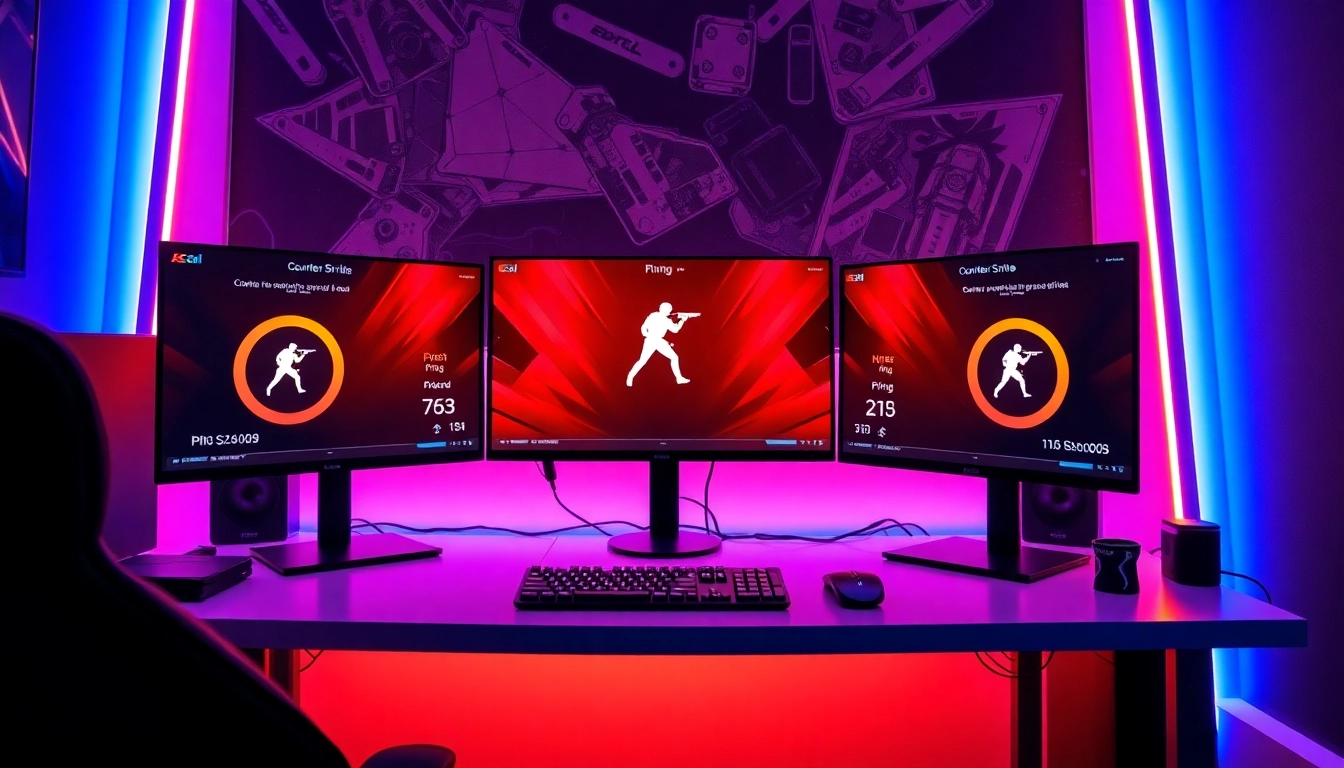
Achieve the Best Results with Effective Cs Teste Strategies for Gaming Optimization
Understanding Cs Teste and Its Role in Gaming Performance
In the fast-paced world of online gaming, especially competitive titles like Counter-Strike, performance optimization is paramount for players seeking to gain an edge. One critical aspect fans and gamers alike focus on is the stability and responsiveness of their network connection, which directly impacts gameplay quality. This is where cs teste—a comprehensive network testing process—comes into play. Essentially, Cs Teste is a series of diagnostic tests aimed at measuring critical network metrics such as ping, latency, and packet loss, providing insight into your current gaming environment. Understanding and utilizing Cs Teste effectively can dramatically improve your gaming experience by allowing you to identify and address network bottlenecks before they influence your performance in critical moments.
What is Cs Teste and Why It’s Essential for Gamers
Cs Teste functions as a diagnostic tool to evaluate the quality of your internet connection specifically for gaming purposes. It is a vital step because even minor lags or jitter can cause noticeable discrepancies in gameplay, such as delayed shots or missed opportunities, which in high-stakes matches can be the difference between victory and defeat. This testing process involves measuring several key metrics:
- Ping: The time it takes for data to travel from your device to the game server and back, measured in milliseconds. Lower ping indicates a quicker response time, essential for real-time gaming.
- Packet loss: The percentage of data packets that fail to reach their destination, which can cause lag, stuttering, or disconnections.
- Jitter: Variability in ping over time, which affects the consistency of your connection.
By regularly conducting Cs Teste sessions, players can verify whether their network conditions meet the demands of competitive gaming, identify potential issues, and take informed steps toward optimizing their setup.
Key Metrics Measured During Cs Teste Sessions
Ping
Ping is often the primary focus for gamers because it represents the responsiveness of your connection. A ping under 30ms is considered excellent, while anything above 100ms can introduce noticeable delays. Fast response times are crucial in FPS games where split-second decisions determine outcomes.
Packet Loss
A packet loss rate exceeding 1% can cause significant gameplay issues. High packet loss indicates that data packets are being dropped along the transmission path, leading to erratic or delayed actions in-game.
Jitter
Consistency is key in competitive gaming. Jitter, or the fluctuation of ping times, can cause unpredictable lag spikes, disrupting a player’s ability to react effectively. A jitter below 10ms is generally acceptable, whereas higher values introduce instability.
Common Challenges Faced When Performing Cs Teste
While Cs Teste provides valuable insights, gamers often encounter certain challenges that can hinder accurate assessment:
- Fluctuating network conditions: Internet speed varies throughout the day due to network congestion or background usage, leading to inconsistent test results.
- Insufficient testing tools: Relying on basic or unreliable testing software may not capture true network behavior, resulting in misleading data.
- Server proximity: Testing against servers that are geographically far away exaggerates latency; optimal testing should include local servers to reflect typical gameplay conditions.
- Network interference: Wi-Fi interference, bandwidth saturation, or hardware limitations can distort test outcomes, making it difficult to pinpoint issues accurately.
Addressing these challenges involves careful planning of testing times, selecting reliable tools, and ensuring a stable network environment during assessments.
How to Conduct Accurate and Reliable Cs Teste
Tools and Software for Effective Cs Teste
Popular tools for network testing include dedicated applications like pingplotters, speedtest.net, and specialized gaming ping testers such as CS 2 ping test. Many of these offer detailed analytics and real-time monitoring capabilities. For local testing, command-line tools like “ping” and “tracert” can be useful for quick diagnostics at home.
Step-by-step Guide to Perform a Cs Teste
- Ensure your network is under minimal load by disconnecting other devices or closing bandwidth-heavy applications.
- Connect via a wired Ethernet connection to eliminate Wi-Fi variations.
- Open your preferred testing tool, select the server closest to your gaming location, and initiate the test.
- Record multiple readings over different times of the day to account for fluctuations.
- Analyze the metrics, focusing on ping, packet loss, and jitter.
Best Practices for Interpreting Test Results
Look for consistently low ping, minimal packet loss, and stable jitter. Significant deviations or spikes signal the need for further investigation or network adjustments. Always compare results against recommended thresholds for competitive gaming and take note of patterns over time to identify persistent issues.
Optimizing Your Network for Better Cs Teste Outcomes
Tips to Reduce Ping and Latency Issues
Minimize latency by prioritizing your gaming device in your router settings, closing background applications, and avoiding simultaneous downloads or streaming. Using Quality of Service (QoS) features can also allocate bandwidth to gaming traffic, ensuring smoother performance.
Configuring Your Internet Connection
Opt for wired connections, update your router firmware regularly, and choose providers with high-speed and low-latency plans. Additionally, disable unnecessary network services that can create congestion.
Using VPNs and Proxies to Improve Test Results
While not always recommended, a carefully chosen VPN can reroute your traffic through less congested pathways, reducing ping. However, select VPNs with gaming-optimized servers and ensure they do not introduce additional latency.
Implementing Improvements Based on Cs Teste Results
Adjusting Game Settings
Lowering in-game graphics settings can reduce the strain on hardware, allowing for smoother gameplay. Disabling background overlays or reducing view distance can also improve responsiveness.
Upgrading Hardware and Connection Devices
Invest in high-quality routers supporting Wi-Fi 6, use Ethernet cables of appropriate quality and length, and upgrade network cards or modems if they are outdated.
Maintaining Optimal Network Health
Regularly reboot routers, update firmware, and monitor network usage to prevent congestion. Implementing routine checks with Cs Teste ensures ongoing performance and early detection of issues.
Performance Monitoring and Ongoing Testing
Scheduling Regular Cs Teste Sessions
Make testing a routine, especially before major gaming sessions, to establish baseline performance and monitor changes over time. Frequent testing can help identify transient issues caused by external factors like ISP performance.
Tracking Progress with Analytics Tools
Use software that logs test results over days or weeks, providing visual analytics of your network’s stability. These insights help prioritize upgrades and adjustments.
Responding to Fluctuating Test Results Effectively
When performance dips, identify the cause—be it hardware, interference, or ISP issues—and take corrective action promptly. Partnering with your internet provider for persistent problems can lead to tailored solutions that improve gaming quality.


